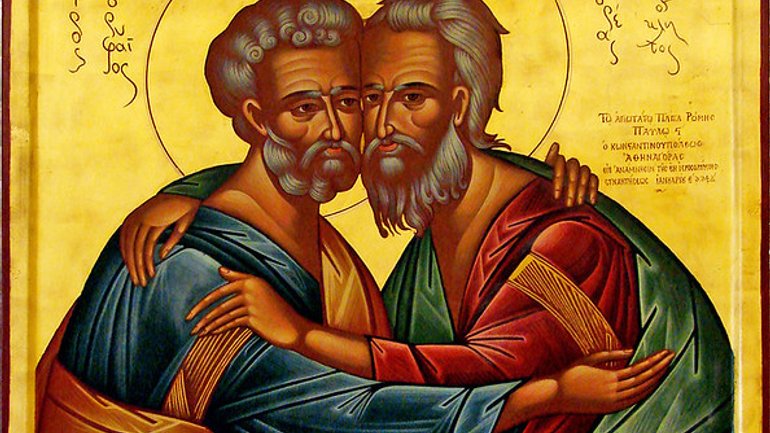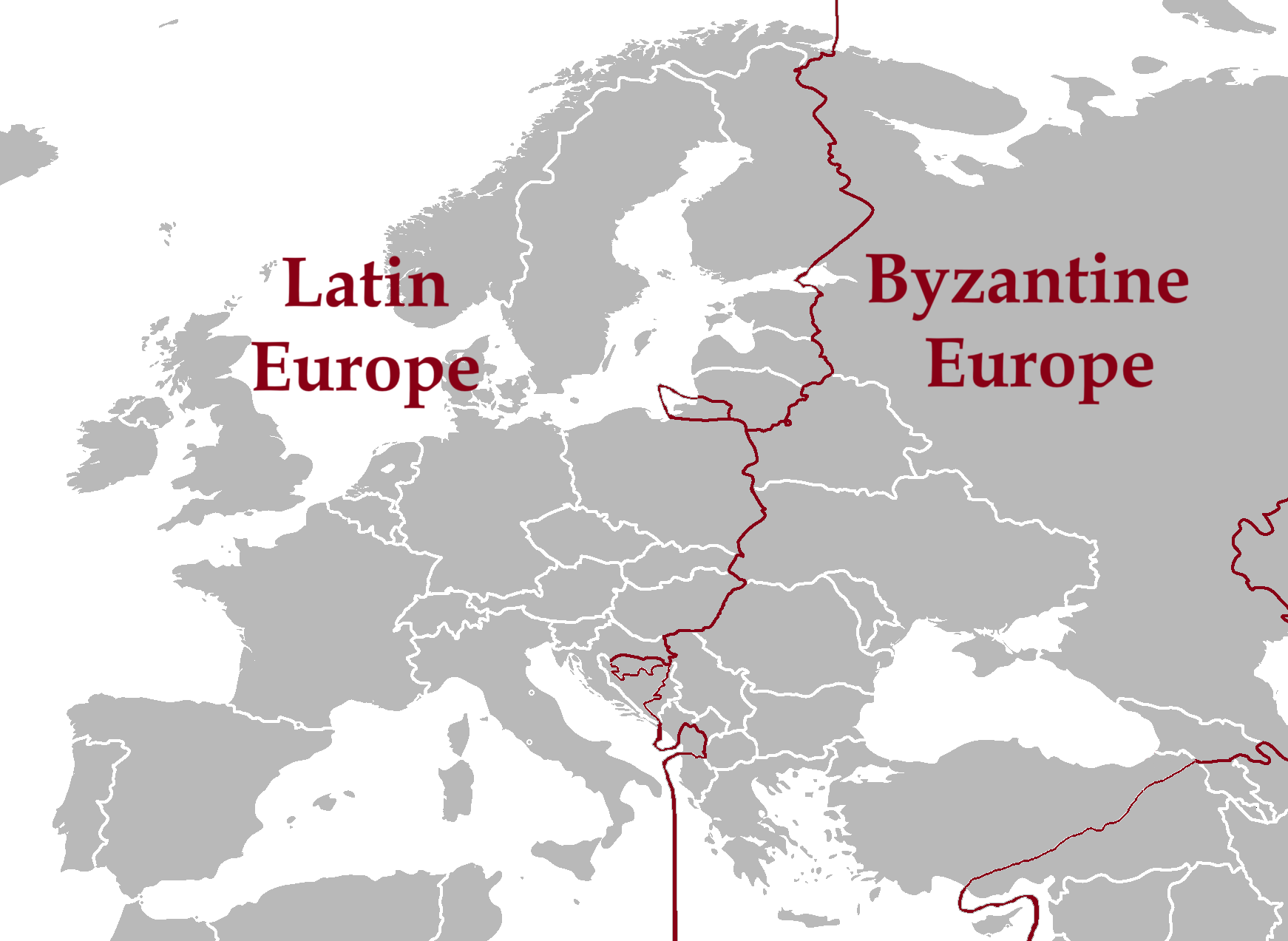What Happens after the Restoration of Catholic-Orthodox Communion

By Benjamin Martin
In Ukraine, there are two prominent Orthodox jurisdictions – the Orthodox Church of Ukraine (OCU) and the Ukrainian Orthodox Church (UOC) – and three prominent Catholic jurisdictions – the Ukrainian Greek Catholic Church (UGCC), the Latin ecclesiastical province of Lviv, and the Greek Catholic Eparchy of Mukachevo. Administratively, the Latin jurisdiction will most likely remain independent. The other four, however, share the same Byzantine Rite and could consider administrative union. At present, neither the UOC nor the Greek Catholic Eparchy of Mukachevo exhibit interest in administrative unity, but the OCU and the UGCC have repeatedly expressed their interest.
Any process of union between the OCU and UGCC may take several years, with committees formed to consider how to integrate their respective liturgical, theological, pastoral, and canonical traditions. The parties will need to work out the internal organization of the reunited Church – whether or not eparchies will be grouped into regional metropolitanates, for example. They will likely draft a new governing charter and map out non-overlapping boundaries for all the dioceses of Ukraine and anticipate procedures for how the Greek Catholic Eparchy of Mukachevo or the UOC or its parts might be integrated in the future. Then perhaps they will seek the consent of Rome and appeal to Constantinople for a new tomos of patriarchal status.
The reunited Church of Ukraine will also confront the question of the diaspora. The OCU’s 2019 tomos of autocephaly entrusts all Byzantine Rite faithful in diaspora to the care of Constantinople, in accord with the 2009 decision of the Orthodox primates at the 4th pre-conciliar pan-Orthodox conference at Chambésy to integrate their diasporic hierarchies in 13 regions around the world. However, the UGCC supports extra-territorial eparchies in Rome, Paris, Munich, Buneos Aires, Melbourne, and Karaganda, Kazakhstan and even extra-territorial metropolitanates in Poland, the US, Canada, and Brazil. In agreement with pan-Orthodox consensus, however fleeting it may have been, and in obedience to her Mother Church, the Church of Ukraine may cede these extra-territorial jurisdictions to Constantinople.
Finally, the patriarchal Church of Ukraine will need to determine whether she will regularly invite the UOC, the Latin ecclesiastical province of Lviv, and the Greek Catholic Eparchy of Mukachevo to participate in her Local Councils or Bishops’ Councils. If not, perhaps she will also establish an episcopal assembly for all the Catholic and Orthodox bishops of Ukraine. In the latter case, it will need to be determined how frequently the assembly will convene and whether the assembly will be led always by the Patriarch of Kyiv or by another elected president.
Similar processes must occur across Europe, though they may unfold differently in different countries. In Romania, for example, the Romanian Greek Catholic Church exhibits much less interest in integration with the larger Romanian Orthodox Church. At present, the Romanian Greek Catholic Church and the Latin ecclesiastical province of Bucharest, with which is also associated an ordinariate for Armenian Catholics, form a single Romanian Episcopal Conference, whose presidency alternates between the Byzantine Archbishop of Blaj and the Latin Archbishop of Bucharest. Perhaps the Romanian Greek Catholic Church will come under the jurisdiction of Constantinople and remain a member of the Catholic Romanian Episcopal Conference. As in Ukraine, the Romanian Orthodox Church will have to consider whether to invite the other jurisdictions to participate in her synods or whether to form a more encompassing episcopal assembly.
Probably, the choice should be offered to every Byzantine Catholic Church in Europe: whether to integrate with the corresponding autocephalous Orthodox Church, if there is one, or to come under the direct jurisdiction of Constantinople. The former is canonically preferable, but the latter may serve to protect the integrity of these communities and to ensure their gentle transition back into communion with their co-religionists. Maybe the autocephalous churches will object to the canonical irregularity of Constantinople’s jurisdiction within their territories, but if it is necessary such an intervention is certainly appropriate for a time to heal the wounds of schism. Because every country in Eastern Europe also has a Latin episcopal conference or jurisdiction, the same question arises in all of them: whether the Local Orthodox Church will invite non-Orthodox jurisdictions to participate in her synods or form a wider national episcopal assembly.
In Western Europe, the situation is clearer: All the Byzantine jurisdictions have been asked to work toward their integration and canonical regularization in nine regions, each of which may receive autonomy under the jurisdiction of Constantinople, and every country has a Latin-majority national episcopal conference in which Byzantine bishops will be invited to participate. Likewise, across Europe, every episcopal conference and autocephalous or autonomous Orthodox Church or diasporic assembly will be invited to participate in the Council of the Bishops’ Conferences of Europe (CCEE):
|
Latin-Majority Conferences |
Byzantine/Byzantine-Majority |
|||||
|
Italy |
Hungary |
Turkey |
Constantinople |
Italy & Malta |
||
|
France |
Czechia |
Russia |
Russia |
France |
||
|
Spain |
Poland |
Belarus |
Serbia |
Spain & Portugal |
||
|
Portugal |
Croatia |
Serbia, Kosovo, |
Romania |
Great Britain |
||
|
England & Wales |
Albania |
Montenegro, |
Bulgaria |
& Ireland |
||
|
Scotland |
Bosnia |
& North |
Georgia |
Scandinavia |
||
|
Scandinavia |
Slovakia |
Macedonia |
Ukraine |
Austria |
||
|
Austria |
Slovenia |
Romania |
Cyprus |
Germany |
||
|
Malta |
Lithuania |
Bulgaria |
Greece |
Belgium, Holland, |
||
|
Germany |
Latvia |
Ukraine |
Albania |
& Luxembourg |
||
|
Belgium |
Greece |
Poland |
Switzerland |
|||
|
Switzerland |
Czechia & Slovakia |
& Liechtenstein |
||||
|
Ireland |
Ohrid |
|
||||
|
Netherlands |
Finland |
|
||||
|
|
Estonia |
|
||||
|
|
|
|
|
Bessarabia |
|
|
The CCEE also includes the Archbishop of Luxembourg, the Archbishop of Monaco, the Maronite Archbishop of Cyprus, the Latin Bishop of Chişinău, the Ruthenian Bishop of Mukachevo, and the Latin Apostolic Administrator of Estonia. Regarding the last four of these, if they are invited to participate in the national synods or episcopal assemblies of Cyprus, Moldova, Ukraine, or Estonia, respectively, then maybe they need not retain their special membership in the CCEE. Similarly, perhaps the Latin Bishops of Finland and North Macedonia will break away from their present episcopal conferences in order to participate in the national synods or episcopal assemblies of Finland and North Macedonia, respectively.

A more contentious issue in Europe is that of canonical territory. It is less of a problem if Latin and Byzantine hierarchies are allowed to co-exist as they do today, but the Church must still benefit from the clarification of the border between Latin and Byzantine Europe. Taking into account tradition and present state borders, it may be argued that to the Latin Church belongs: the Baltic States of Finland, Estonia, Latvia, and Lithuania – even though Byzantine archbishops will likely represent Finland and Estonia in the CCEE; the so-called Visegrad Four – Poland, Czechia, Slovakia, and Hungary; Slovenia, Croatia, and the Federation of Bosnia and Herzegovina – although the Church of Serbia rather than Constantinople has the right to care for Byzantine faithful in these territories; and the Albanian counties of Shkodër, Lezhë, Kukës, and Dibër – whose Byzantine faithful are of course entrusted to the Albanian Orthodox Church.
The Church of Russia will object to Roman claims in the Baltics, but these countries are traditionally Lutheran and therefore Western. The Churches of Poland and of Czechia and Slovakia may likewise object, since such Roman claims call into question their status as autocephalous Churches, having been constituted in Latin territory. From a canonical perspective, perhaps they ought to be reconstituted as autonomous Churches under the jurisdiction of Constantinople, but Rome would likely never insist on this, not wanting to risk communion with them by challenging their autocephalous status. Rome may, however, take keen interest in a future process guided by Constantinople that integrates the Polish Orthodox Church with the present Ukrainian Catholic Metropolitanate of Przemysí-Warsaw. Rome could also seek further integration of Byzantine jurisdictions in Finland, Estonia, Latvia, Lithuania, Czechia, Slovakia, and Hungary, perhaps resulting in an autonomous or autocephalous Byzantine Church under the care of Constantinople in each of them – e.g. four Visegrad autocephalies and, out of respect for the Lutherans, four Baltic autonomies.
It should be noted that, while the autocephalous status of a Byzantine Church entitles her primate to a place in the diptychs of the Local Churches, if the Church is constituted outside Byzantine territory her primate should not by virtue of such autocephalous status outrank Latin metropolitan archbishops. To demonstrate similar care for precedence in Byzantine territory and respect for the Albanian Orthodox Church in particular, Rome could transfer the Diocese of Rrëshen to the ecclesiastical province of Shkodër and thereby lower the rank of the Latin Archdiocese of Tirana-Durrës to that of exempt archdiocese without suffragan.
I will address two more issues of precedence. The first concerns the office of cardinal. Because the College of Cardinals is a distinctly Roman institution, in contradistinction to the more universal Papal Synod, the office of cardinal does not appear among the Orthodox Churches. The office also has accrued many canonical privileges. On the one hand, it would not seem inappropriate for Rome gently to ask the Orthodox Churches to respect these traditions. On the other hand, Rome might revisit the rank of cardinal in the ecclesiastical order of precedence and promote above it the offices of national primate and episcopal conference president, so as better to respect the interplay of primacy and synodality especially at the national level. Consequently, Rome could amend the order of precedence to be observed outside consistories of the Sacred College as follows:
|
Order of Precedence & Forms of Address |
||
|
Western |
|
Eastern |
|
Your Holiness |
Pope, Patriarch, Catholicos-Patriarch, |
Your Holiness or Your Beatitude, according to custom |
|
Your Eminence |
Cardinal |
Your Eminence |
|
Your Beatitude |
Titular Patriarch |
Your Beatitude |
|
Your Excellency |
Metropolitan Archbishop, |
Your Eminence |
|
Your Excellency |
Bishop |
Your Grace |
The second issue of precedence concerns the taxis of the diptychs. The topic is extremely controversial and perhaps need not be addressed at all. But, if the restoration of communion between Catholics and Orthodox creates an opportunity to resolve the disagreement among the Orthodox Churches over the taxis, perhaps the following may be considered:
First, at least for a time several prelates may be named together in relation to a single apostolic see, such as in the cases of Alexandria or Antioch.
Second, similar to the custom of Rome, the Church of the East and the Church of Armenians could occupy the sixth and seventh positions, after the Church of Jerusalem.
Third, the Church of Georgia could come eighth, so as to respect all three of the surviving ancient catholicosates.
Fourth, it is inappropriate for the Local Churches to seek their own honor via the taxis, but if its revision is necessary it could reflect not the order in which the patriarchal daughters of Constantinople gained autocephalous and patriarchal status but the order in which they received from Constantinople the Christian faith: Bulgaria, Serbia, Romania, Ukraine, Russia. The Russian Church will strenuously object, but in light of the blasphemy and cowardice of her present leadership she hardly deserves ecclesiastical autonomy, much less a place of honor. May she learn to rejoice to become the humblest patriarchate.
Fifth, to respect the territory of Rome and ensure the canonical regularity of Byzantine jurisdictions within it, the taxis could finish as follows: Cyprus, Greece, Albania, North Macedonia, Poland, Czechia, Slovakia, Hungary – this would require Constantinople to issue a few new tomos of autocephaly.
Sixth, anticipating the restoration of communion with the Oriental Orthodox Churches, Rome could ask the Catholic Catholicos-Patriarch and Orthodox Catholicos of Cilicia in the future to cede the seventh place in the taxis to the Catholicos of Etchmiadzin. Because the chanting of the diptychs is an issue of only the Byzantine Rite, Rome might ask the Churches of Ethiopia, Eritrea, and India to accept, despite their antiquity, positions in the taxis after the patriarchal daughters of Constantinople. And, especially if the Byzantine-Melkite and Syriac Churches of Antioch ever integrate and elect one Patriarch of Antioch, Rome might ask the Maronite Church and the Church(es) of Cilicia not to seek a place in the diptychs because they both operate with full autonomy within the territory of Antioch.
Finally, after the restoration of communion between the Orthodox and Catholic Churches, all of the Eastern Churches of Europe will want to develop appropriate protocol with Rome and the Roman Curia. It is likely that soon after the restoration of communion no Byzantine Church will remain under the direct jurisdiction of the Roman Curia or its Dicastery for the Eastern Churches; the Catholic Code of Canons for the Eastern Churches (CCOE) will no longer apply – as suggested by the conclusion of Orientalum Ecclesiarum. Yet, the CCOE provides helpful direction regarding communication with Rome.
Tradition requires that a Local Church inform Rome and the other Local Churches of synodal decisions (can. 111 §3) and primatal elections and that a newly elected primate send a confession of faith and petition for communion (cann. 76, 153). Rome also requests to be notified whenever a primatal see becomes vacant (can. 128 §1) or impeded (can. 132 §3); whenever an eparchial see becomes vacant (cann. 220 §1, 221 §1) or impeded (can. 233); whenever a Local Church is unable to form a permanent synod (can. 121); whenever a candidate for episcopal ordination accepts his election (can. 184 §2); and whenever a bishop is ordained or enthroned (can. 86 §3).
Tradition also authorizes Rome to receive appeals and, when necessary, to adjudicate territorial or jurisdictional disputes. Therefore, Rome asks to be consulted regarding the transfer of persons from one jurisdiction to another, although Rome’s consent is presumed if both bishops consent in writing (can. 32). Rome also expects to be consulted regarding: the modification of dioceses (can. 85 §1); the foundation or dissolution of religious congregations or orders (cann. 506, 507); liturgical reform (can. 657); questions of ecumenical intercommunion (can. 671 §3); agreements with secular authorities (can. 98); episcopal elections conducted by letter (can. 186 §1); the resignation of primates (can. 126 §2); cases of disobedient bishops; and anything that innovates upon ecclesiastical practice and thereby affects the offices of patriarch, primate, metropolitan, bishop, or protosyncellus.
Apart from these administrative matters, all the Local Churches will likely seek to establish with Rome and each other edifying routines of letters and visits, sacramental concelebration, cooperation in charity, evangelization, and education, and the sharing of stories of martyrs and saints and of experiences of pilgrimage. These practices, as well as all the foregoing, will exhibit and strengthen the communion finally restored between East and West.









